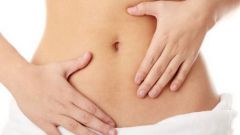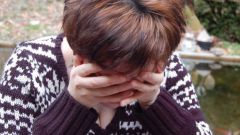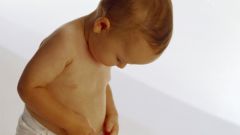Instruction
1
Umbilical hernia in children – a fairly common phenomenon. In newborns, it is considered normal because the muscles of the abdominal wall is still very weak. The growth of the baby the umbilical ring narrows and the muscles thicken and strengthen and the hernia disappears by itself. Usually the hole in the abdominal wall closes completely when the child begins to move: to roll over, to crawl, i.e. to the end of the first year of life.
2
To determine umbilical hernia the baby is quite simple. When the child is upright, he can see the protrusion of the navel. It can be almost negligible if the hole in the abdominal wall is small (1-1. 5 cm). Then the hernia can be felt: when pressing on stomach finger "falls", and easily determined "gryzenia gate", i.e. the size of the hernia opening. In the supine position, the hernia is not visible, it will self-reduce.
3
Sometimes when the umbilical hernia child may behave restlessly, cry, refuse to eat. But these symptoms are quite rare. Generally hernia does not bring the kid out of trouble. So the treatment in this case is only in massage, required to strengthen the abdominal wall. If the hernia cause the child anxiety or passes to 5 or 6 years, have resorted to surgery.
4
In adults an umbilical hernia is rare. She mostly affects women after the age of 30. The cause of hernia – weakening of the abdominal wall during pregnancy and after childbirth. Hernia may occur in the elderly and in people with obesity.
5
Symptoms of umbilical in adults is bulging and heaviness in the region of the navel, and frequent constipation, pain in the abdomen and back, nausea, rumbling in the abdomen. Treatment of umbilical hernia in adults is surgical intervention during which there is complete deliverance from it.




